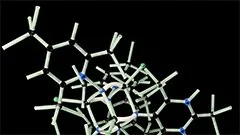Introduction
The myocardium, the thickest and middle layer of the heart wall, plays a crucial role in maintaining cardiac function by generating contractile forces essential for the pumping action of the heart. This tutorial delves into the histology, structure, functions, and diseases associated with this vital tissue.
Anatomical Location
The myocardium is situated between the epicardium (outer layer) and endocardium (inner layer). It extends throughout the heart, including atria, ventricles, septum, and papillary muscles.
Composition of Myocardial Tissue
Cells of the Myocardium
- Cardiomyocytes: The primary cell type found in the myocardium are cardiomyocytes, which are highly specialized muscle cells responsible for contractility and conduction within the heart. These elongated, multinucleate cells display a unique arrangement of organelles, such as mitochondria, myofibrils, sarcoplasmic reticulum, and T tubules, that enable their functional characteristics.
- Connective tissue: The extracellular matrix (ECM) composed of collagen fibers, elastin, proteoglycans, and other components provides structural support and separates individual cardiomyocytes to form syncytium.
- Blood vessels: Capillaries, arteries, and veins supply the myocardium with nutrients and oxygen necessary for its optimal functioning. Coronary circulation is crucial in maintaining homeostasis within this vital tissue.
- Nerve fibers: Autonomic nerve fibers innervate the myocardium, controlling various functions like heart rate, contractility, and conduction through the release of neurotransmitters.
Histological Structure
General Features
- Cellular organization: The myocardium exhibits a syncytial arrangement due to extensive intercalated discs connecting adjacent cardiomyocytes. This continuity facilitates synchronized contraction and coordination across the heart.
- Architecture: Cardiomyocytes within the myocardium exhibit an alternating pattern of oblique and longitudinal arrangement, depending on their location in the heart chamber. This orientation optimizes force transmission during each cardiac cycle.
- Myofibrils: The contractile apparatus of cardiomyocytes consists primarily of myofibrils, which contain thick filaments (myosin) and thin filaments (actin). These structures work in tandem to facilitate muscle contraction.
- Sarcomeres: The repeating functional units along myofibrils are called sarcomeres. They house the sites where actin and myosin interact during contraction, known as cross-bridges.
- Mitochondria: Abundant mitochondria within cardiomyocytes provide energy for ATP production via oxidative phosphorylation, ensuring the continuous generation of contractile forces.
Functions of Myocardium
- Contractility: The primary function of myocardial tissue is to generate contractile forces that facilitate pumping action within the heart. This process propels blood from the atria and ventricles into systemic and pulmonary circulation, respectively.
- Electrical conduction: Myocardium also plays a significant role in cardiac conduction through specialized regions such as the sinoatrial node, atrioventricular node, and Purkinje fibers. This system coordinates the contraction of cardiomyocytes across the heart during each cardiac cycle.
- Regulation of blood pressure: By pumping blood efficiently, the myocardium helps maintain stable blood pressure levels within the circulatory system.
Diseases Affecting Myocardium
- Ischemic heart disease: Atherosclerosis and thrombosis can occlude coronary arteries, leading to myocardial ischemia or infarction (heart attack). These conditions may result in irreversible damage or death of cardiomyocytes.
- Hypertrophic cardiomyopathy: This genetic disorder causes excessive thickening of the myocardium, ultimately compromising its pumping efficiency and potentially leading to heart failure.
- Dilated cardiomyopathy: Chronic inflammation, viral infections, or toxic exposures can cause progressive enlargement of the myocardium, resulting in decreased contractility and eventually heart failure.
- Arrhythmias: Abnormal electrical conduction within the myocardium can lead to arrhythmias (irregular heart rhythms), some of which may be life-threatening if not promptly treated.
MCQ: Test your knowledge!
Do you think you know everything about this course? Don't fall into the traps, train with MCQs! eBiologie has hundreds of questions to help you master this subject.
To go further...
These courses might interest you
Create a free account to receive courses, MCQs, and advice to succeed in your studies!
eBiologie offers several eBooks containing MCQ series (5 booklets available free for each subscriber).








